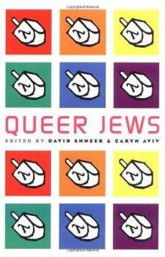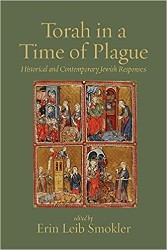Sometimes it is possible to learn a great deal about a book simply by judging its cover. The cover of Torah Queeries is almost completely black and white, with the words, “Weekly Commentaries on the Hebrew Bible” (the book’s subtitle) in square, block lettering. The center of the page is the image of an open Torah scroll focusing most clearly on a section from Parashat Balak, wherein a surprising character initially hired to curse Israel instead offers Israel a blessing. The yad pointing to these verses is bright pink, as is the word “Queeries.” Torah Queeries is a compilation of writings wherein queer Jews take ownership of traditional text. The book offers a pink yad to point the way to new and renewed understandings of the Torah for the entire Jewish community. Also, straight allies (some of the most important names in Judaism) explore queer approaches to Jewish text. As the highlighted yad would indicate, this book is about how we read text; it is less about who is doing the reading. Torah Queeries comes to teach a new approach to looking at traditional text. As Judith Plaskow reminds us in her foreward to the anthology, “turn it and turn it again, for everything is in it” (Pirkei Avot, 5:25).

Nonfiction
Torah Queeries: Weekly Commentaries on the Hebrew Bible
- Review
By
– October 10, 2011
Julie Pelc Adler is a rabbi and a co-editor of the anthology Joining the Sisterhood: Young Jewish Women Write Their Lives (State University of New York Press, 2003). She is the assistant director of the Kalsman Institute on Judaism and Health at HUC in Los Angeles and also teaches undergraduate courses in the Literature and Communications Department at the American Jewish University.
Discussion Questions

Jewish literature inspires, enriches, and educates the community.
Help support the Jewish Book Council.

